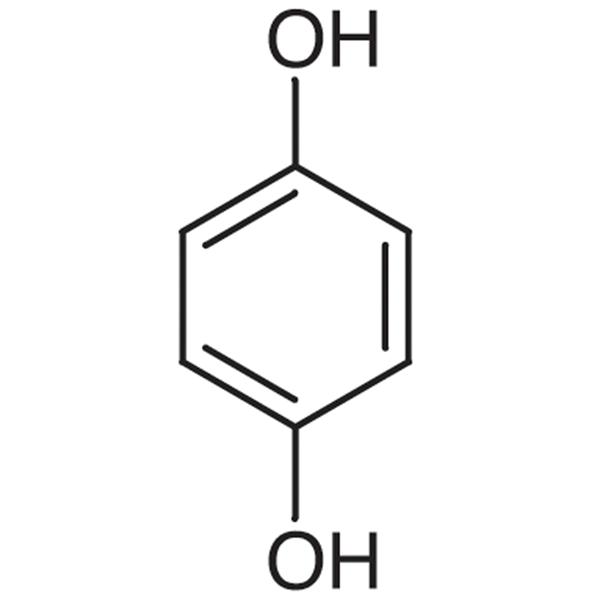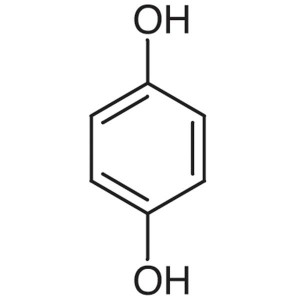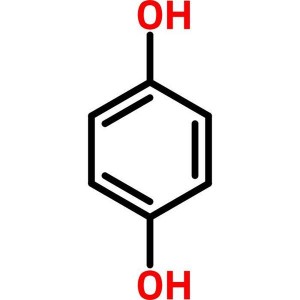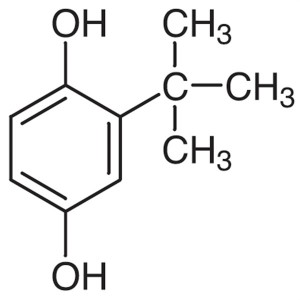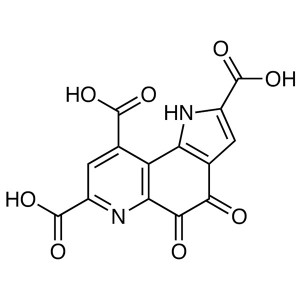Hydroquinone CAS 123-31-9 Purity >99.0% (HPLC)
Shanghai Ruifu Chemical Co., Ltd. is the leading manufacturer of Hydroquinone (CAS: 123-31-9) with high quality. Ruifu Chemical can provide worldwide delivery, competitive price, excellent service, small and bulk quantities available. Purchase Hydroquinone (CAS: 123-31-9), Please contact: alvin@ruifuchem.com
| Chemical Name | Hydroquinone |
| Synonyms | 1,4-Benzenediol; 1,4-Dihydroxybenzene; Quinol; HQ; Benzene-1,4-diol; para-Hydroquinone |
| Stock Status | In Stock, Commercial Production |
| CAS Number | 123-31-9 |
| Molecular Formula | C6H6O2 |
| Molecular Weight | 110.11 g/mol |
| Melting Point | 172.0 to 175.0℃(lit.) |
| Boiling Point | 285℃ |
| Flash Point | 165℃(329°F) |
| Density | 1.32 |
| Refractive Index n20/D | 1.6320 |
| Sensitive | Light Sensitive, Air Sensitive |
| Water Solubility | Soluble in Water, 59 g/l 15℃ |
| Solubility | Very Soluble in Ether, Alcohol. Soluble in Acetone. Slightly Sol. in Benzene |
| Solubility in Dilute Acetic Acid | Transparency |
| COA & MSDS | Available |
| Sample | Available |
| Origin | Shanghai, China |
| Brand | Ruifu Chemical |
| Items | Inspection Standards | Results |
| Appearance | White Acicular Crystal or Crystal Powder | Complies |
| Melting Point | 172.0 to 175.0℃ | Complies |
| Water by Karl Fischer | <0.50% | 0.22% |
| Ignition Residue (Sulfate) | ≤0.02% | 0.02% |
| Chlorine | ≤0.01% | <0.01% |
| Sulfate | ≤0.01% | <0.01% |
| Heavy Metal (as Pb) | ≤0.001% | <0.001% |
| Lead (Pb) | ≤0.001% | <0.001% |
| Iron (Fe) | ≤0.001% | <0.001% |
| Catechole | ≤0.30% | <0.30% |
| Resorcin | Pass | Pass |
| Infrared Spectrum | Conforms to Structure | Complies |
| Solubility in H2O | Clear (50mg/ml) | Pass |
| Conclusion | The product has been tested & complies with the specifications | |
Stable. Combustible. Incompatible with strong oxidizing agents, strong bases, oxygen, ferric salts. Light and air-sensitive. Discolours in air.
Package: Bottle, Aluminium foil bag, 25kg/Cardboard Drum, or according to customer's requirement.
Storage Condition: Air and light sensitive. Keep the container tightly closed and store in a cool, dry (2~8℃) and well-ventilated warehouse away from incompatible substances. Protect from light and moisture.
Shipping: Deliver to worldwide by air, by FedEx / DHL Express. Provide fast and reliable delivery.
How to Purchase? Please contact Dr. Alvin Huang: sales@ruifuchem.com or alvin@ruifuchem.com
15 Years Experience? We have more than 15 years of experience in the manufacture and export of a wide range of high quality pharmaceutical intermediates or fine chemicals.
Main Markets? Sell to domestic market, North America, Europe, India, Korea, Japanese, Australia, etc.
Advantages? Superior quality, affordable price, professional services and technical support, fast delivery.
Quality Assurance? Strict quality control system. Professional equipment for analysis include NMR, LC-MS, GC, HPLC, ICP-MS, UV, IR, OR, K.F, ROI, LOD, MP, Clarity, Solubility, Microbial limit test, etc.
Samples? Most products provide free samples for quality evaluation, shipping cost should be paid by customers.
Factory Audit? Factory audit welcome. Please make an appointment in advance.
MOQ? No MOQ. Small order is acceptable.
Delivery Time? If within stock, three days delivery guaranteed.
Transportation? By Express (FedEx, DHL), by Air, by Sea.
Documents? After sales service: COA, MOA, ROS, MSDS, etc. can be provided.
Custom Synthesis? Can provide custom synthesis services to best fit your research needs.
Payment Terms? Proforma invoice will be sent first after confirmation of order, enclosed our bank information. Payment by T/T (Telex Transfer), PayPal, Western Union, etc.
Risk Codes
R22 - Harmful if swallowed
R40 - Limited evidence of a carcinogenic effect
R41 - Risk of serious damage to eyes
R43 - May cause sensitization by skin contact
R50 - Very Toxic to aquatic organisms
R68 - Possible risk of irreversible effects
Safety Description
S26 - In case of contact with eyes, rinse immediately with plenty of water and seek medical advice.
S36/37/39 - Wear suitable protective clothing, gloves and eye/face protection.
S61 - Avoid release to the environment. Refer to special instructions / safety data sheets.
UN IDs 2662
WGK Germany 3
RTECS MX3500000
TSCA Yes
HS Code 29072210
Hazard Class 9
Packing Group III
Toxicity LD50 orally in rats: 320 mg/kg (Woodard)
Hydroquinone (HQ) (CAS: 123-31-9) is produced by the oxidation of aniline or phenol, by the reduction of quinone, or from a reaction of acetylene and carbon monoxide.
Hydroquinone is a reducing agent used in a photographic developer, which polymerizes in the presence of oxidizing agents. In the manufacturing industry it may occur include bacteriostatic agent, drug, fur processing, motor fuel, paint, organic chemicals, plastics, stone coating, and styrene monomers.
Use as photographic reducer and developer; as reagent in the determination of small quantities of phosphate; as antioxidant. Depigmentor.
Photographic reducer and developer; antioxidant; stabilizing agent for some polymers; intermediate in the manufacturing of some dyes and pigments; in cosmetic formulations.
Hydroquinone is used in photography developers (black and white, X-ray, and microfilms), in plastics, in hair dyes as an antioxidant and hair colorant. Hydroquinone is found in many skin bleaching creams.
Hydroquinone is applied topically to treat disorders characterized by excessive melanin in the epidermis, such as melasma. In the United States, nonprescription skin-lightening products contain hydroquinone at concentrations of 2% or less; higher concentrations are available by prescription.
Widely used in photography, dyes, rubber, pesticides, chemicals, medicine, polymer inhibitors, chemical fertilizer industry desulfurizer, urea synergistic agent, antioxidant, chemical analysis reagents. also pharmaceutical and dye intermediates. and intermediate for fine chemicals.
Darkens on exposure to air and light. Miscible in water. Solutions become brown in air due to oxidation. Oxidation is very rapid in the presence of alkali.
Hydroquinone is a slight explosion hazard when exposed to heat. Incompatible with strong oxidizing agents. Also incompatible with bases. Hydroquinone reacts with oxygen and sodium hydroxide. Reacts with ferric salts . Hot and/or concentrated NaOH can cause Hydroquinone to decompose exothermically at elevated temperature. (NFPA Pub. 491M, 1975, 385)
Exposures to hydroquinone in large quantities by accidental oral ingestion produce toxicity and poisoning. The symptoms of poisoning include, but are not limited to, blurred speech, tinnitus, tremors, sense of suffocation, vomiting, muscular twitching, headache, convul- sions, dyspnea and cyanosis from methemoglobinemia, coma, and collapse from respira- tory failure. Occupational workers should be allowed to work with protective clothing and dust masks with full-face or goggles to protect the eyes, and under proper management.
Dust cloud may explode if ignited in an enclosed area. Hydroquinone can react with oxidizing materials and is rapidly oxidized in the presence of alkaline materials. Oxidizes in air.

